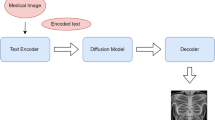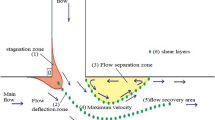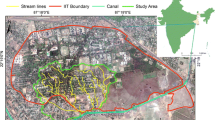Abstract
In the process of segmenting water remote congestion image of the ship, due to interference of the external environment and the influence of the number of ships, the target is blocked, traditional methods for image segmentation region intersection, lead to target obscured, therefore, in this paper, a segmentation optimization method for water remote congestion image of the ship based on MCMC is proposed, through morphology denoising to preprocess water remote congestion image of the ship, and remove the noise of the image, ensure do not produce the global geometric distortion. Water remote ship congestion image field is divided into many disjoint areas, to give all states of the image, by using Bayesian method deduce the solution space of state, and setting up four classes of water remote ship congestion image model for four of the most frequent image regions appeared, the solution space structure is analyzed, and data driven method is used to classify the characteristics, according to the probability of each pixel eigenvector belonging to the cluster center to calculate the proposal probability, and transfer speed of Markov chain, establish ergodic Markov chain solution space, so as to achieve segmentation optimization of water remote ship congestion image. The simulation results show that the proposed method not only has the very high accuracy of image segmentation, also has complete segmentation result of target.




Similar content being viewed by others
References
Anibou C, Saidi MN, Aboutajdine D (2015) Classification of textured images based on discrete wavelet transform and information fusion. J Inf Process Syst 11(3):421–437
Anibou C, Saidi MN, Aboutajdine D (2015) Classification of textured images based on discrete wavelet transform and information fusion[J]. J Inf Process Syst 11(3):421–437
Jianxi W, Quan G, Fei M (2015) Under the nonlinear interference images of remote target automatic detection of the simulation of the ship [J]. Math Comput Simul 5:395–398
Khongkraphan K (2014) An efficient color edge detection using the Mahalanobis distance[J]. J Inf Process Syst 10(4):589–601
Koteswara Rao L, Venkata Rao D (2015) Local quantized extrema patterns for content-based natural and texture image retrieval[J]. Hum Centric Inf Syst 9(5):26–28
Lee S-H, Jung K-H, Kang D-W, Jung K-H (2014) Pixel-based fusion algorithm for multi-focused image by comparison and filtering of SML map[J]. JOC 5(4):28–31
Liu S, Cheng* X, Fu W et al (2014) Numeric characteristics of generalized M-set with its asymptote [J]. Appl Math Comput 243:767–774
Liu S, Fu W, He L et al (2015) Distribution of primary additional errors in fractal encoding method [J]. Multimed Tools Appl. doi:10.1007/s11042-014-2408-1
Liu S, Zhang Z, Qi L et al (2015) A fractal image encoding method based on statistical loss used in agricultural image compression [J]. Multimed Tools Appl. doi:10.1007/s11042-014-2446-8
Murala S, Jonathan Wu QM (2013) Local ternary co-occurrence patterns: a new feature descriptor for MRI and CT image retrieval. Neurocomputing 119(7):399–412
Murala S, Maheshwari RP, Balasubramanian R (2012) Directional local extrema patterns: a new descriptor for content based image retrieval. Int J Multim Inf Retr 1(3):191–203
Murala S, Maheshwari RP, Balasubramanian R (2012) Local maximum edge binary patterns: a new descriptor for image retrieval and object tracking. Signal Process 9(2):1467–1479
Punnappurath A (2015) Face recognition across non-uniform motion blur, illumination, and pose [J]. IEEE Trans Image Process 24(7):2067–2082
Reddy PVB, Reddy ARM (2014) Content based image indexing and retrieval using directional local extrema and magnitude patterns. AEU Int J Electron Commun 68(7):637–643
Rui Y, Huang TS (1999) Image retrieval: current techniques, promising directions and open issues. J Vis Commun Image Represent 10:39–62
Shi C-Z, Gao S, Liu M-T (2015) Stroke detector and structure based models for character recognition: a comparative study[J]. IEEE Trans Image Process 24(12):4952–4964
Sui Y, Zhang S, Zhang L (2015) Robust visual tracking via sparsity-induced subspace learning[J]. IEEE Trans Image Process 24(12):4686–4700
Vipparthi SK, Nagar SK (2014) Expert image retrieval system using directional local motif XoR patterns. Expert Syst Appl 41(17):8016–8026
Vipparthi SK, Nagar SK (2014) Color directional local quinary patterns for content based indexing and retrieval. Hum Centric Comp Inform Sci 4:6
Wang Z (2004) Image quality assessment: from error visibility to structural similarity[J]. IEEE Trans Image Process 13(4):600–612
Wang L, Tang D, Yanwen G, Do MN (2015) Common visual pattern discovery via nonlinear mean shift clustering[J]. IEEE Trans Image Process 11(2):5442–5454
Yousaf S (2004) Closed-loop restoration approach to blurry images based on machine learning and feedback optimization[J]. IEEE Trans Image Process 24(12):5928–5941
Zhao L, Gao X, Tao D, Li X (2015) Tracking human pose using max-margin markov models[J]. IEEE Trans Image Process 24(12):5274–5287
Author information
Authors and Affiliations
Corresponding author
Rights and permissions
About this article
Cite this article
Lv, J., Wu, Y. & Chen, X. Segmentation optimization simulation of water remote congestion image of the ship. Multimed Tools Appl 76, 19605–19620 (2017). https://doi.org/10.1007/s11042-015-3227-8
Received:
Revised:
Accepted:
Published:
Issue Date:
DOI: https://doi.org/10.1007/s11042-015-3227-8




